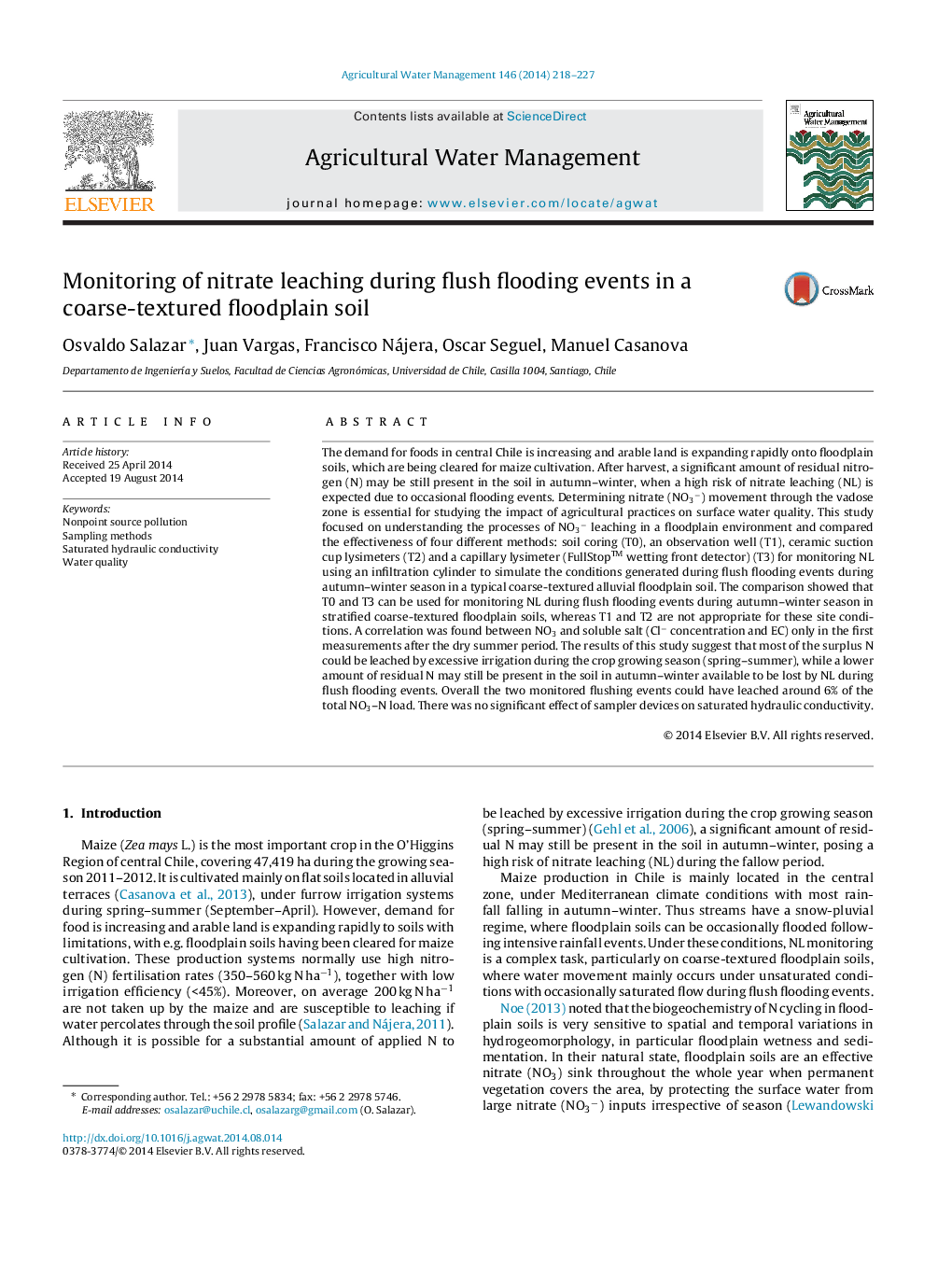| کد مقاله | کد نشریه | سال انتشار | مقاله انگلیسی | نسخه تمام متن |
|---|---|---|---|---|
| 6363960 | 1622933 | 2014 | 10 صفحه PDF | دانلود رایگان |
عنوان انگلیسی مقاله ISI
Monitoring of nitrate leaching during flush flooding events in a coarse-textured floodplain soil
ترجمه فارسی عنوان
نظارت بر شستشوی نیترات در حوادث ناشی از سیلاب در خاک سیلابی بافت زبر
دانلود مقاله + سفارش ترجمه
دانلود مقاله ISI انگلیسی
رایگان برای ایرانیان
کلمات کلیدی
آلودگی منبع بدون نقطه، روش نمونه گیری، هدایت هیدرولیکی اشباع شده، کیفیت آب،
موضوعات مرتبط
علوم زیستی و بیوفناوری
علوم کشاورزی و بیولوژیک
علوم زراعت و اصلاح نباتات
چکیده انگلیسی
The demand for foods in central Chile is increasing and arable land is expanding rapidly onto floodplain soils, which are being cleared for maize cultivation. After harvest, a significant amount of residual nitrogen (N) may be still present in the soil in autumn-winter, when a high risk of nitrate leaching (NL) is expected due to occasional flooding events. Determining nitrate (NO3â) movement through the vadose zone is essential for studying the impact of agricultural practices on surface water quality. This study focused on understanding the processes of NO3â leaching in a floodplain environment and compared the effectiveness of four different methods: soil coring (T0), an observation well (T1), ceramic suction cup lysimeters (T2) and a capillary lysimeter (FullStop⢠wetting front detector) (T3) for monitoring NL using an infiltration cylinder to simulate the conditions generated during flush flooding events during autumn-winter season in a typical coarse-textured alluvial floodplain soil. The comparison showed that T0 and T3 can be used for monitoring NL during flush flooding events during autumn-winter season in stratified coarse-textured floodplain soils, whereas T1 and T2 are not appropriate for these site conditions. A correlation was found between NO3 and soluble salt (Clâ concentration and EC) only in the first measurements after the dry summer period. The results of this study suggest that most of the surplus N could be leached by excessive irrigation during the crop growing season (spring-summer), while a lower amount of residual N may still be present in the soil in autumn-winter available to be lost by NL during flush flooding events. Overall the two monitored flushing events could have leached around 6% of the total NO3-N load. There was no significant effect of sampler devices on saturated hydraulic conductivity.
ناشر
Database: Elsevier - ScienceDirect (ساینس دایرکت)
Journal: Agricultural Water Management - Volume 146, December 2014, Pages 218-227
Journal: Agricultural Water Management - Volume 146, December 2014, Pages 218-227
نویسندگان
Osvaldo Salazar, Juan Vargas, Francisco Nájera, Oscar Seguel, Manuel Casanova,
